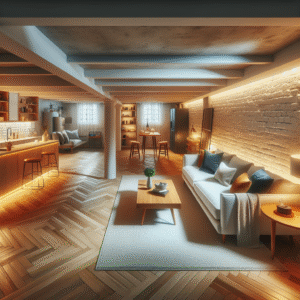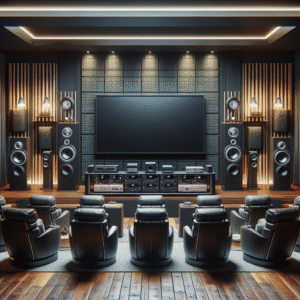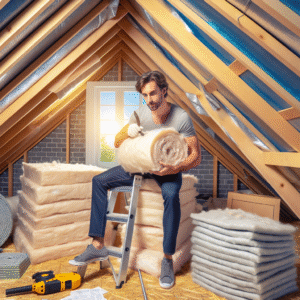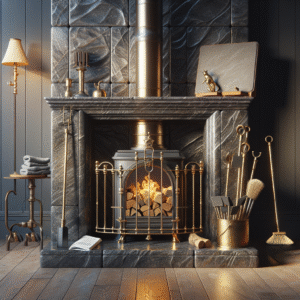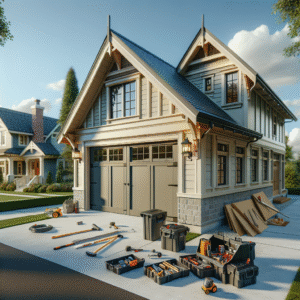Welcome to BuildNet, your go-to source for understanding and managing your home’s plumbing system. Whether you’re dealing with a leaky faucet, a clogged drain, or planning some routine maintenance, we’ve got the information you need to keep your plumbing in top shape. In this article, we’ll dive into the fundamental components of home plumbing, offer practical maintenance tips, and address common issues you might encounter. Perfect for homeowners looking to keep their system running smoothly without always calling in the pros!
Understanding Your Home’s Plumbing System: Key Components and Functionality
Knowing the basics of your home’s plumbing system isn’t just for DIY enthusiasts; it’s essential for any homeowner. Your plumbing system is more than just pipes and taps—it’s a complex network designed to deliver fresh water, remove waste, and protect your home from damage and disease. Here, we’ll break down the key components like the water supply, drainage systems, and the all-important venting mechanisms that keep everything flowing smoothly.
Routine Maintenance Tips for Long-Lasting Plumbing Health
Maintaining your plumbing might seem daunting, but regular upkeep can greatly extend the life of your plumbing system and help avoid costly repairs. We’ll provide easy-to-follow tips for daily and seasonal maintenance that will keep your pipes in pristine condition. Learn how to prevent clogs, minimize wear and tear, and more importantly, when to recognize that it’s time to call a professional.
Common Plumbing Issues and How to Address Them Effectively
Even with the best maintenance routine, plumbing issues can still arise. We’ll discuss some of the most common plumbing problems homeowners face, from leaky faucets and slow drains to more severe issues like broken pipes. More importantly, we’ll guide you through how to effectively address these issues and when it’s crucial to enlist the help of a professional plumber from BuildNet’s trusted directory.
Armed with the right knowledge and tools, you can ensure that your home’s plumbing system operates efficiently, saving you time, money, and stress. Let’s dive in and keep those pipes in check!

If you’re ready to take your home improvement or construction project to the next level, we can help! Find trusted contractors on BuildNet, whether you’re looking for renovations, new builds, electrical work, plumbing, or anything in between. Our directory connects you with qualified professionals who can make your vision a reality.
Understanding Your Home’s Plumbing System: Key Components and Functionality
Welcome to the fascinating world of home plumbing! Whether you’re a new homeowner or simply curious about the network of pipes and fixtures behind your walls, understanding the basics of your home’s plumbing system can save you from future headaches and help you communicate effectively with professionals when you need them. Let’s dive into the essential components and how they function together to bring convenience and sanitation to our homes.
The Heart of the System: Water Supply and Drainage
At its core, your home’s plumbing system is divided into two primary subsystems:
- Water Supply System: This is responsible for bringing fresh water into your home. It’s pressurized to allow water to travel upstairs, around corners, or wherever else it’s needed. The water entering your home is typically controlled by a main shutoff valve, which is crucial in emergencies or when you need to carry out repairs.
- Drain-Water Vent System: Once water has been used, it needs to exit your property safely. The drainage system uses a series of pipes to carry waste water away, while vent pipes expel sewer gases and allow air into the system to keep it running smoothly. This system ensures that your home remains odor-free and hygienic.
Key Components of Your Plumbing System
Understanding the components that make up these systems can help you identify issues and perform basic maintenance:
Pipes and Fittings
Pipes, made from materials like copper, PVC (polyvinyl chloride), or PEX (cross-linked polyethylene), make up the delivery network of your plumbing system. Fittings such as elbows, tees, and valves dictate the direction and flow of water.
Fixtures
Fixtures are the points where water is used—sinks, toilets, showers, and bathtubs are all examples of fixtures. Each fixture is equipped with taps or valves to control water flow and temperature.
Water Heater
The water heater is a critical appliance that raises the temperature of water before it’s delivered to your fixtures, ensuring you have hot water for bathing, cooking, and cleaning.
Sump Pump
In areas prone to basement flooding, a sump pump is essential. It collects and expels water away from your home’s foundation, preventing water damage and maintaining the integrity of your home’s structure.
Main Shutoff Valve
The main shutoff valve is your best friend in times of plumbing emergencies. Knowing where this valve is can save you from extensive water damage in case of a pipe burst.
How It All Works Together
Your home’s plumbing might seem complex, but it works based on simple principles of physics like gravity and pressure. When a faucet is turned on, water is pushed through the pipes because of the pressure in your water supply system. After the water serves its purpose, it exits through the drainage system, which relies on gravity to pull it down towards municipal sewers or septic tanks.
Maintaining the Balance: Pressure and Vents
For your plumbing system to function efficiently, maintaining proper water pressure is essential. Too much pressure can stress your pipes and fixtures, while too little can make your plumbing sluggish. Water pressure regulators can help maintain the balance, ensuring longevity and consistent performance.
Vent pipes, on the other hand, prevent vacuums that could disrupt the drainage. They are typically routed through the roof and require periodic inspection to ensure they are not blocked.
Getting to Know Your Plumbing Layout
If you’re planning renovations or need to troubleshoot issues, understanding the layout of your plumbing system is invaluable. Most homes have a blueprint of the plumbing installation—often left behind by builders or previous owners. If not, consider hiring a local plumbing professional to create one. This can be a roadmap to guide any future work and ensures that you, or any professional you hire, can work more efficiently.
By familiarizing yourself with the basic setup and functionality of your home’s plumbing, you’ll be better equipped to maintain it properly, spot issues before they become serious, and discuss any plumbing work knowledgeably. Whether you’re in New York, London, or Sydney, a well-maintained plumbing system is key to a comfortable and functional home.

Routine Maintenance Tips for Long-Lasting Plumbing Health
Welcome to another essential home care guide brought to you by BuildNet. Today, we’re diving into the world of plumbing—not the most glamorous topic, but let’s face it, absolutely crucial for a happy, functioning home. We’ll walk you through some straightforward, effective maintenance tips to keep your plumbing system in tip-top shape. So, grab your wrench (just kidding, you won’t need it today), and let’s get started!
1. Keep an Eye on Your Water Pressure
High water pressure might feel great in the shower, but it can strain your pipes, leading to leaks or burst connections. It’s a good idea to monitor your water pressure with a simple gauge you can attach to an outside faucet. The ideal water pressure should be between 40-60 psi. If you find yours is higher, consider installing a pressure reducer for smoother, more sustainable plumbing performance.
2. Regularly Inspect for Leaks
Little drips can lead to big problems. Regularly check under sinks, behind toilets, and around appliances for any signs of leaking. Look for puddles, dampness, or even the faint sound of water running—these can all suggest a leak. Early detection can save you from much larger problems down the road, such as water damage and mold.
3. Don’t Neglect Your Drains
Avoid Chemical Drain Cleaners: While they may seem like a quick fix, chemical drain cleaners can actually harm your pipes if used too frequently. Instead, use a plunger or a plumber’s snake to unclog blocked drains. For a natural alternative, try a mixture of hot water, baking soda, and vinegar.
Install Drain Strainers: Simple mesh strainers can prevent hair and other debris from clogging your bathroom drains. In the kitchen, avoid dumping cooking oil and coffee grounds down the sink. They might clear your sink initially but can solidify in your plumbing, creating stubborn blockages.
4. Care for Your Water Heater
Your water heater needs love too! Annually draining your water heater can remove sediment build-up that affects efficiency and longevity. Also, check the temperature setting on the heater’s thermostat. It should not be above 120°F to prevent scalding and reduce energy usage.
5. Prepare for the Cold
Insulating your pipes is a smart move if you live in an area where temperatures drop during the winter. This prevents your pipes from freezing, which can cause them to burst. For extra protection, consider using heat tape or a heated cable along any exposed pipes.
6. Know Your Main Water Valve
Do you know where the main water shut-off valve is in your home? It’s vital to familiarize yourself with its location before an emergency strikes. Turning off the water in the event of a major leak can minimize water damage and give you peace of mind while you wait for the plumber.
7. Schedule Professional Inspections
No matter how handy you might be, it’s always a good idea to have a professional plumber inspect your plumbing system periodically. They can spot issues you might miss, provide expert repairs, and help maintain your home’s plumbing health. This is particularly important if you live in an older home that might have outdated plumbing components.
8. Use Water Softeners If Needed
If you’re in an area with hard water, those minerals can accumulate and wreak havoc on your plumbing system. Consider installing a water softener. It can extend the life of your appliances by preventing mineral build-up and make your water more appliance-friendly.
9. Educate Your Household
Last but not least, make sure everyone in your home knows what should and shouldn’t go down the drains. Create a list of non-flushable items for the bathroom, and make sure everyone knows the basics of what can harm your plumbing system. Education is one of the easiest ways to prevent plumbing mishaps.
Maintaining your home’s plumbing might not be the most exciting task on your to-do list, but it’s certainly one of the most important. Simple steps, like checking for leaks and insulating pipes, can significantly extend the life of your plumbing system and help avoid costly repairs. So, take a little time to care for your pipes—they’ll definitely thank you for it.
Common Plumbing Issues and How to Address Them Effectively
Hey there! Dealing with plumbing issues at home can feel like navigating a maze without a map. Whether it’s a dripping faucet or a major leak, these problems can disrupt your daily routine and potentially cause significant damage if not addressed properly. Let’s dive into some of the most common plumbing issues and explore effective solutions to keep your home’s water flowing smoothly.
Dripping Faucets
It’s the little ‘drip, drip’ that could drive anyone nuts! Not only is a dripping faucet annoying, but it can also lead to higher water bills. Most commonly, the issue stems from worn-out washers or O-rings, which can be replaced fairly easily. Here’s how you can fix it:
- First, make sure to turn off the water supply to the faucet.
- Remove the faucet handle by loosening the screw that holds it.
- Replace the old washer with a new one that matches the size and shape.
- Reassemble the faucet and turn the water back on.
If the problem persists, it might be a good idea to contact a local plumber from a trusted directory like BuildNet to ensure everything is tight and right.
Clogged Drains
Whether it’s your kitchen sink or the bathroom drain, clogging is one of the most common hassles. Before you call in a professional, here are a few DIY tricks:
- Use a plunger: A good plunger can often dislodge whatever is blocking the drain.
- Try a homemade cleaning solution: Mix vinegar and baking soda and pour it down the drain. Wait for about an hour before flushing with hot water.
- Check the P-trap: The section of pipe under the sink might be where the clog has formed. Place a bucket underneath, unscrew the P-trap, and clear out the debris.
If these steps don’t clear the clog, it might be time to pull up BuildNet’s directory and find a skilled plumber nearby.
Running Toilets
A running toilet can waste a lot of water. It’s usually caused by a faulty flapper or a fill valve. To fix a running toilet:
- Check the flapper: If it’s worn or doesn’t seal properly, replace it.
- Adjust the float: Sometimes, adjusting the float can stop the water from running constantly.
- Inspect the fill valve for any wear and replace if necessary.
Regularly checking these components can save you from unexpected high water bills.
Low Water Pressure
Low water pressure can turn a comforting shower into a frustrating trickle. It might be due to sediment build-up in your faucet aerators or shower heads. Here’s how to fix it:
- Remove the aerator or shower head and soak it in a vinegar solution to dissolve any mineral deposits.
- If cleaning doesn’t help, you might need to check for more significant issues like hidden leaks or issues with the local water supply.
If you suspect the problem is beyond basic troubleshooting, it’s wise to consult with a professional plumber.
Leaky Pipes
Leaky pipes can cause major damage if not fixed promptly. They often occur at joints, which means replacing a section might be necessary. For a temporary fix:
- Use a waterproof tape or a pipe clamp to seal the leak temporarily.
However, for a permanent solution, replacing the damaged section of the pipe or the fittings is often required. This is where finding a competent professional via BuildNet might be your best bet.
Dealing with common plumbing issues doesn’t always require a professional’s touch. With the right tools and a little know-how, many problems can be resolved by you, the savvy homeowner. However, when the issue is beyond your skill set, don’t hesitate to call in a local expert. Remember, the goal is to keep your home’s plumbing in top shape to avoid bigger, more expensive problems down the line!

What are the main components of a home plumbing system?
Your home’s plumbing system is more complex than you might think! It includes the water supply system, the drainage system, and various fixtures and appliances. Key components include pipes, drains, valves, and taps. Each plays a crucial role in ensuring that fresh water comes in and wastewater goes out efficiently.
How often should I perform routine maintenance on my plumbing?
Routine maintenance is essential for the longevity of your plumbing system. It’s recommended to check your plumbing annually. This includes inspecting pipes for leaks or corrosion, cleaning aerators on faucets, testing water pressure, and flushing your water heater to remove sediment buildup.
What are some common plumbing issues I might encounter?
Common issues include dripping faucets, leaking pipes, clogged drains, running toilets, and low water pressure. These problems can range from minor annoyances to major inconveniences and should be addressed promptly to avoid further complications.
How can I unclog a blocked drain effectively?
To unclog a blocked drain, start with a plunger. If that doesn’t work, try using a plumber’s snake or a chemical drain cleaner as a last resort. Remember, frequent clogs might indicate a deeper issue, so consider consulting a professional if problems persist.
What should I do if I have a leaking faucet?
A leaking faucet often results from a worn-out washer or gasket. You can replace these components yourself if you’re comfortable with DIY projects. Turn off the water supply, disassemble the faucet, and replace the faulty parts. If you’re unsure, it’s best to call a professional.
Is it better to repair or replace old plumbing fixtures?
Consider replacing old or inefficient plumbing fixtures if repairs become too frequent or costly. New fixtures can improve your home’s water efficiency and reduce the likelihood of future problems.
How can I improve my home’s water pressure?
If you’re experiencing low water pressure, check if a specific fixture is affected or if the whole house is impacted. Simple fixes include cleaning out fixtures or checking for partially closed supply valves. For more persistent issues, it may be necessary to investigate the water lines or consult a professional.
When should I call a professional plumber?
You should call a professional plumber for issues that go beyond basic maintenance, such as installing new pipes, fixing major leaks, or any problem involving the main water line or sewer repairs. Professional help is also recommended for any issues that persist despite your best DIY efforts.
Can regular maintenance prevent plumbing emergencies?
Yes, regular maintenance can significantly reduce the likelihood of unexpected plumbing emergencies. Keeping an eye on your system helps catch and address minor issues before they escalate into major problems, saving you time, money, and stress.
Why should I choose BuildNet to find a contractor for plumbing services?
BuildNet connects you with skilled, reliable contractors in your area. Whether it’s routine maintenance, repairs, or emergency services, our professionally vetted contractors are equipped to handle all your plumbing needs. Plus, requesting a free quote through BuildNet ensures that you’re getting competitive pricing and quality service.
Conclusion
Understanding and maintaining your home’s plumbing system is key to a smoothly functioning household. By staying on top of routine maintenance and addressing issues promptly, you can ensure long-lasting plumbing health and avoid inconvenient or costly problems. Remember, while DIY solutions work for minor issues, don’t hesitate to contact a professional for more complex problems.
Need help with your plumbing? Don’t fret! Visit BuildNet’s website to connect with top-notch local contractors ready to assist you. They can offer expert advice, service, and free quotes, ensuring your plumbing needs are met promptly and professionally. Trust BuildNet to keep your home’s plumbing in top shape!

